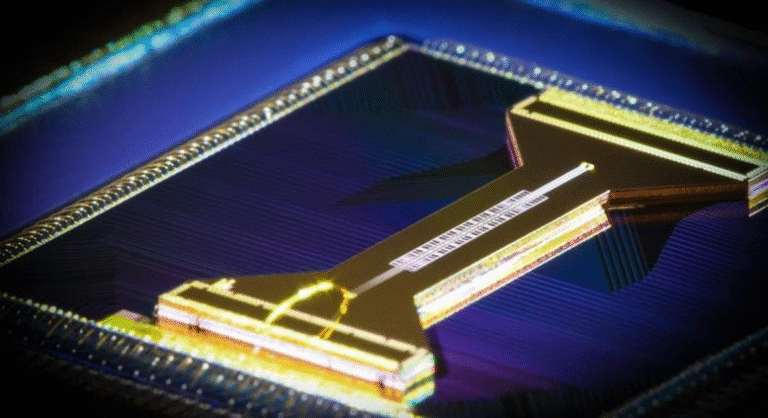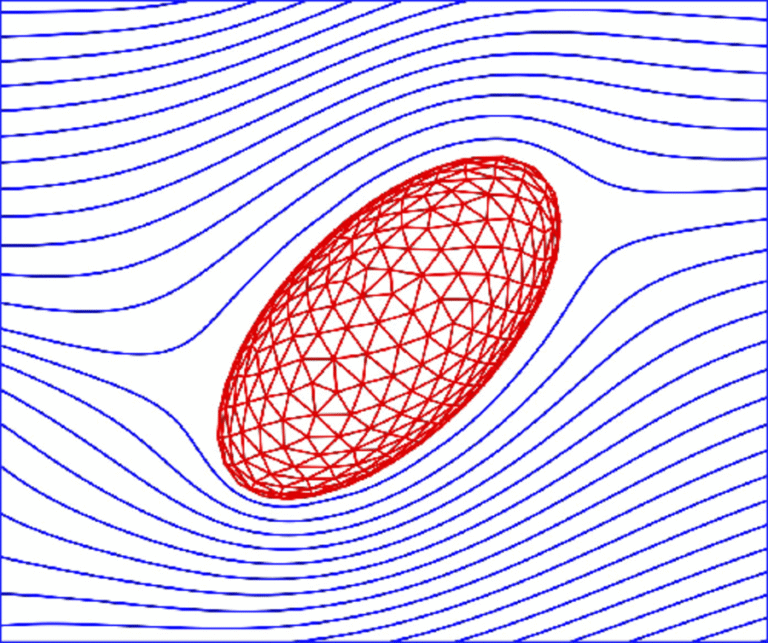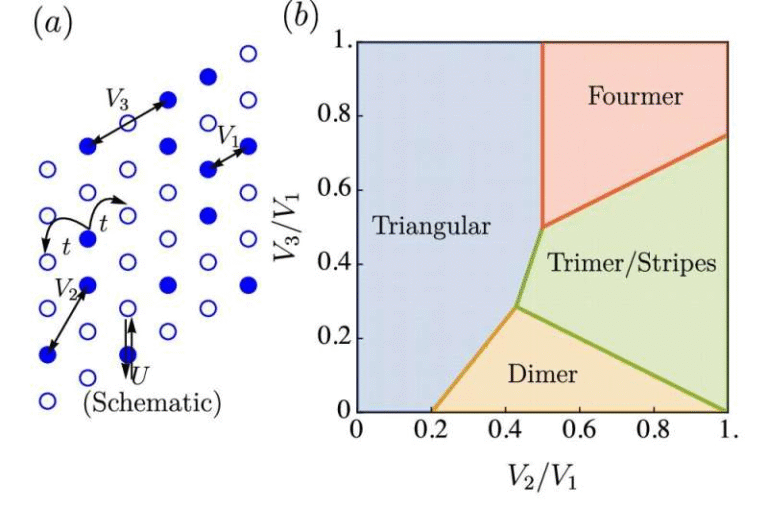Scientists Accidentally Create a “Rainbow Laser” on a Tiny Chip — A Breakthrough That Could Transform Data and Light Technologies

In an unexpected turn of events, scientists working on LiDAR technology at Columbia University’s Lipson Nanophotonics Group have discovered a completely new way to generate multiple laser colors from a single microchip. The finding, described in the paper “High-Power Electrically Pumped Microcombs” published in Nature Photonics on October 7, 2025, could significantly change how we use lasers in data centers, communications, sensing, and quantum devices.
While the discovery began as a side effect during LiDAR research, its implications are far-reaching. The team’s success lies in creating a powerful, compact, and efficient frequency comb — essentially a laser that emits dozens of distinct, evenly spaced colors of light, all locked in perfect harmony.
What Exactly Happened
The team, led by Professor Michal Lipson, along with Andres Gil-Molina, Yair Antman, Ohad Westreich, Xingchen Ji, Min Chul Shin, Gaurang Bhatt, Ipshita Datta, Bok Young Kim, Yoshitomo Okawachi, and Alexander L. Gaeta, were originally focused on improving LiDAR systems — technologies that measure distance using light pulses.
During their experiments, they noticed something unusual. As they pushed more optical power through one of their chips, the light output suddenly turned into what’s known as a frequency comb — a spectrum made up of many precisely spaced colors of light.
Each “tooth” in this comb represents a distinct color or frequency that can be used independently. Think of it like a rainbow sliced into neat, perfectly separated bands, where each color carries its own data signal without interfering with others.
From Bulky Lasers to One Chip
Traditionally, generating such a comb required bulky lab setups filled with expensive lasers and amplifiers. These systems are powerful but impractical for compact or commercial applications.
What the Lipson Lab achieved is remarkable: they managed to generate a strong, stable frequency comb entirely on a silicon-based chip, without the need for external optical equipment.
This achievement means that, in the future, data centers — which rely heavily on optical communication — might replace entire racks of individual lasers with one small device. That would not only save space but also reduce energy consumption and lower costs, while massively increasing data throughput.
The Challenge: Turning Messy Light Into Order
To reach this milestone, the researchers started with a laser that’s typically not used for precision tasks — a multimode laser diode. These diodes are known for being extremely powerful but chaotic, producing beams that are noisy and incoherent.
Normally, that kind of light is useless for generating frequency combs. However, the Columbia team developed a clever way to tame the chaos.
They introduced a locking mechanism inside a silicon photonic chip — a structure that reshapes the light’s path at microscopic scales. This mechanism essentially forces the laser light into coherence, “cleaning up” the beam so it becomes stable and orderly.
Once the beam was purified, the chip’s nonlinear optical properties did the rest. The single coherent beam spontaneously split into dozens of distinct, evenly spaced wavelengths, forming a bright and stable frequency comb — all from one compact chip.
How a Frequency Comb Works
A frequency comb is one of the most precise tools in modern optics. Imagine a laser that doesn’t emit just one color, but an entire spectrum of colors, each separated by a fixed and perfectly predictable interval.
On a spectrogram, these appear as a series of sharp spikes — resembling the teeth of a comb, which is where the name comes from. Each “tooth” acts like a separate data channel, capable of carrying its own stream of information.
This technology has already revolutionized fields like optical clocks, high-precision spectroscopy, and fiber-optic communication. But until now, high-power frequency combs required large laboratory setups. The Columbia team has changed that by compressing all the needed functionality into a single, electrically powered microchip.
Engineering Feats Behind the Discovery
The core of the chip is built from silicon nitride (Si₃N₄) — a material widely used in integrated photonics because of its stability and compatibility with existing semiconductor manufacturing.
The chip’s microresonator — a tiny circular light pathway only a few microns wide — helps confine and recirculate the light. This design ensures that the light interacts with itself repeatedly, enhancing the nonlinear effects needed to create the frequency comb.
Importantly, the researchers chose a normal group velocity dispersion (GVD) design, rather than the more commonly used anomalous dispersion approach. This was crucial for controlling how different wavelengths of light spread and interact within the chip.
They also implemented a process called self-injection locking, which uses feedback from the resonator to stabilize the laser output and further improve coherence. This combination of nonlinear optics, feedback stabilization, and material engineering is what allowed the device to reach new performance levels.
Record-Breaking Performance
According to the published data, the chip can achieve on-chip optical power up to 158 milliwatts, an impressive feat for an integrated device of this size. The linewidth of individual comb lines — a measure of how stable and pure each frequency is — was measured at just 200 kilohertz, which indicates high coherence.
Even more strikingly, the researchers achieved more than an order-of-magnitude improvement in optical power compared to any previous electrically pumped microcomb systems. Many of the comb lines exceeded 100 microwatts in power, which is enough for practical communication and sensing applications.
These specifications position the device as the most powerful on-chip frequency comb demonstrated so far.
Why This Discovery Matters
With the explosive rise of artificial intelligence and cloud computing, data centers are under increasing pressure to move enormous volumes of data between processors and memory at light speed. Most of today’s optical links still rely on single-wavelength lasers, meaning each laser carries just one data stream.
A frequency comb changes the game. It allows dozens of wavelengths to travel through the same optical fiber simultaneously — a method known as wavelength-division multiplexing (WDM).
This breakthrough makes it possible to apply WDM directly inside compact electronic systems, not just in large telecommunications networks. The ability to generate so many high-power wavelengths from one chip could dramatically increase data transmission rates, reduce power consumption, and simplify optical interconnects inside servers and computing hardware.
Beyond data centers, this chip could find applications in portable spectrometers, optical clocks, quantum communication systems, and even advanced LiDAR sensors for autonomous vehicles. Essentially, it brings laboratory-grade light precision into small, commercial, real-world devices.
Broader Context: What Are Microcombs and Why Are They Important?
A microcomb, or chip-scale frequency comb, is one of the most exciting frontiers in photonics. It provides a compact way to generate multiple precisely spaced frequencies of light.
These microcombs are used in:
- Telecommunications, where they enable simultaneous data transmission over multiple channels.
- Metrology, including atomic and optical clocks that measure time with extraordinary accuracy.
- Spectroscopy, for identifying chemical substances based on their light absorption patterns.
- Quantum technologies, where they act as synchronized light sources for entanglement and information encoding.
However, traditional microcombs have always required either external lasers or complex optical pumping systems. Electrically pumped microcombs — where the laser and comb are fully integrated on the same chip — are the holy grail. They promise low-cost, scalable, and energy-efficient solutions for the next generation of optical technology.
The Lipson Lab’s discovery marks a major milestone toward making that vision real.
A Step Forward in Silicon Photonics
This development is also another leap in the field of silicon photonics, which aims to bring light-based technologies into mainstream semiconductor manufacturing. The integration of light generation, manipulation, and detection directly onto silicon chips allows optical devices to work side-by-side with electronic circuits.
Silicon photonics is already powering data transmission between chips in large-scale servers, but its potential reaches much further. Compact photonic chips could soon be used in medical devices, environmental sensors, and quantum computers.
By integrating a powerful, coherent, multi-color light source directly onto silicon, this research closes one of the biggest gaps in the field — the lack of efficient on-chip lasers that can operate across many wavelengths.
Looking Ahead
The Lipson team’s “rainbow laser” isn’t just a fun nickname. It represents a new class of devices that merge raw optical power with fine control in a way that was previously impossible at this scale.
The next steps likely involve commercialization and integration into existing photonic platforms. Startups and large tech companies are already exploring similar microcomb systems for data center interconnects, optical computing, and secure communication.
In the near future, it’s entirely possible that a single microcomb chip could handle all the optical data transmission inside a data center or even within a computer’s CPU package.
This discovery, born out of a simple experiment gone sideways, might become one of the foundational technologies of our optical future.
Research Reference:
High-Power Electrically Pumped Microcombs – Nature Photonics, 7 October 2025





